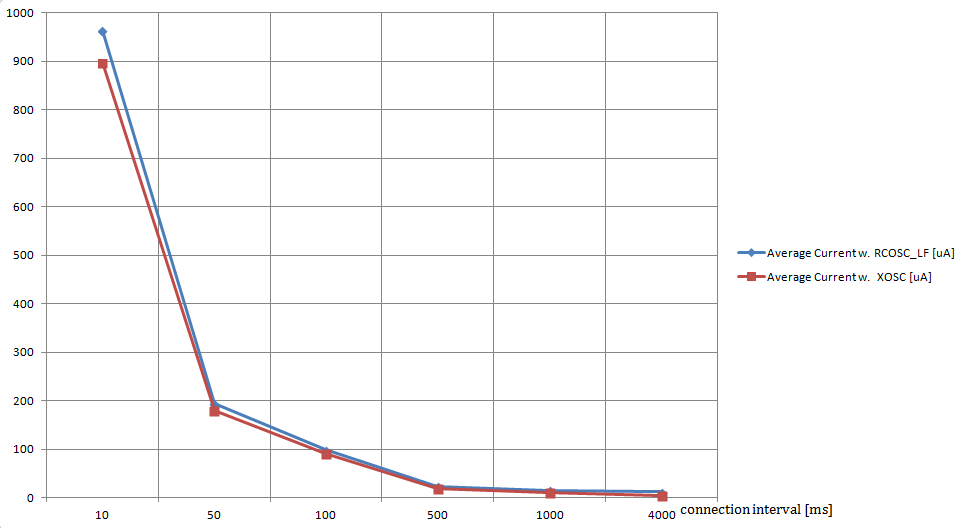SWRA499C June 2016 – September 2019 CC1352P , CC1352R , CC2640 , CC2640R2F , CC2642R , CC2642R-Q1 , CC2650 , CC2652P , CC2652R , CC2652R7 , CC2652RB , CC2652RSIP
4.1 Current Consumption
Using the internal RCOSC_LF as the sleep clock has a net effect on the device current consumption as compared to board designs that utilize an external 32 kHz crystal oscillator. The difference in current consumption varies depending on the configured role of the device. For peripheral (slave) devices in a Bluetooth Low Energy connection, the current consumption will be higher when using the RCOSC_LF as compared to using an external 32 kHz crystal; however, the increase in current consumption is dependent on a number of factors. This increase is due to:
- Performing the calibration at a certain interval
- The extended receive window due to the maximum allowed sleep clock accuracy (± 500 ppm, vs. typically ± 40 ppm with a 32 kHz crystal).
During periods where the CC13x2/CC26xx is advertising (for example, as a beacon or waiting for a connection request) or in standby (while idle), current consumption using the internal RCOSC_LF will be less (better) than using a 32 kHz crystal oscillator.
The calibration process itself takes approximately 1 ms, and for a typical Bluetooth Low Energy connection event the calibration will happen in the background while the radio operates. In most cases, the added current consumption from performing the calibration will thus be negligible. In configurations with longer effective Bluetooth Low Energy connection intervals, that is the connection interval with the maximum slave latency applied is greater than 1 second, there will be additional power consumption because the device has to wake up from standby (sleep) between the connection events to perform the RCOSC_LF calibration. In a board design that uses a 32 kHz crystal, these calibration wakeups would not be required.
The average current consumption using the 32 kHz crystal as compared to using the internal RCOSC_LF for some Bluetooth Low Energy effective connection intervals can be seen in Table 1 and Figure 1. To get actual current consumption for any given configuration, follow the measurement procedure in Measuring CC13xx and CC26xx current consumption.
Table 1. Current consumption for Connection Event from simplePeripheral
| Connection Interval [ms] | Average Current w. RC OSC [µA] | Average Current w. XOSC [µA] |
|---|---|---|
| 10 | 963.3 | 897 |
| 50 | 194.5 | 180 |
| 100 | 98.3 | 90.8 |
| 500 | 23.9 | 19.7 |
| 1000 | 15.4 | 10.8 |
| 4000 | 11.7 | 4.2 |
 Figure 1. Current Consumption vs Connection Interval
Figure 1. Current Consumption vs Connection Interval